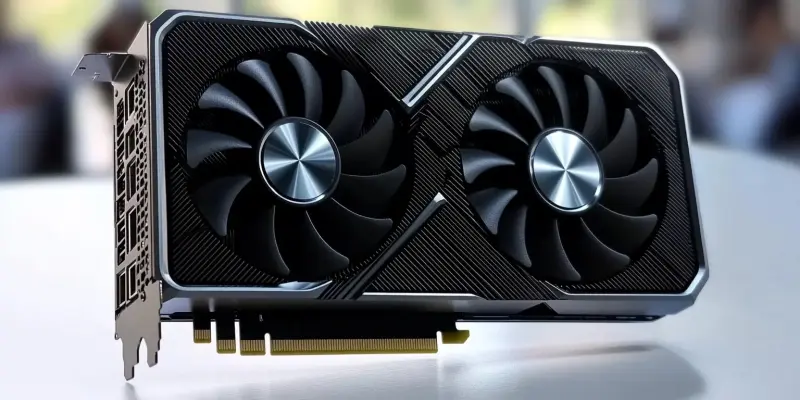Nvidia has been a leading force in the graphics card industry, consistently pushing the boundaries with their cutting-edge technology and innovative product launches. As we look ahead to 2025, the excitement is building around the anticipated unveiling of Nvidia’s new Blackwell GeForce graphics cards, which are expected to be showcased at CES 2025 during CEO Jensen Huang’s keynote on January 6th.
Anticipated Blackwell GeForce Graphics Cards
The buzz surrounding Nvidia’s new GPUs is hard to ignore, with particularly high expectations for the RTX 5090 and RTX 5080 models. These GPUs are rumored to bring significant performance improvements, potentially boosting speeds by 1.5x to 1.7x compared to the current flagship RTX 4090. Such advancements would undoubtedly set a new standard in the graphics card industry, promising superior performance for gamers and professionals alike. However, there are some concerns regarding power consumption, with speculations suggesting these new GPUs could require up to 600W, as well as higher costs compared to their predecessors.
Potential Mid-Range Models: RTX 5070 and RTX 5070 Ti
In addition to the anticipated flagship models, Nvidia is also expected to introduce the RTX 5070 and its potential variant, the RTX 5070 Ti, early in 2025. These mid-range models could offer a more affordable alternative for consumers while still delivering impressive performance. However, rumors suggest that these models might feature a lower VRAM capacity, such as 12GB, which could be a concern for those looking for a future-proof solution in an ever-evolving tech landscape.
Gaming Laptops and DLSS 4 Integration
Nvidia’s 2025 roadmap hints at the possible launch of Blackwell GPUs for gaming laptops, ranging from the RTX 5050 to RTX 5090. This expansion into portable gaming solutions could allow gamers to experience top-tier performance on the go. Simultaneously, there are strong rumors about Nvidia debuting DLSS 4, a technology expected to significantly enhance gaming performance by leveraging the capabilities of the new GPUs. DLSS 4 could potentially revolutionize gaming experiences by providing smoother, more realistic graphics, making it an exciting prospect for the gaming community.
Nvidia’s Entry into the CPU Market
One of the most intriguing developments for 2025 is Nvidia’s potential entry into the CPU market with an Arm-based chip designed to compete with industry giants AMD and Intel. This new processor aims to blend Nvidia’s renowned GPU capabilities with robust CPU performance, potentially through a partnership with MediaTek. By venturing into the CPU market, Nvidia aligns itself with the broader industry shift towards Arm-based devices, mirroring the strategies employed by competitors like Qualcomm with its Snapdragon CPUs.
Broadening Horizons and Industry Trends
The overarching trends suggest that Nvidia is pursuing an aggressive strategy to not only maintain its lead in the GPU market but also to make significant inroads into the CPU sector. By leveraging its expertise and innovative capabilities, Nvidia is poised to push the technological boundaries further. The potential launch of Arm-based PCs indicates that Nvidia is aligning with industry trends toward more efficient and powerful computing solutions that cater to a wide array of consumer needs.
Conclusion
Nvidia has long been a trailblazer in the graphics card industry, continually redefining the limits of technology with their groundbreaking innovations and state-of-the-art product launches. As we cast our gaze toward 2025, there’s a palpable buzz surrounding the eagerly anticipated release of Nvidia’s next-generation Blackwell GeForce graphics cards. This new lineup is poised to set new standards in performance and visual fidelity, captivating both gamers and technology enthusiasts alike.
The tech community is particularly eager for the upcoming CES 2025, where Nvidia’s new Blackwell GeForce graphics cards are expected to make their highly anticipated debut. The unveiling is scheduled to take place during the keynote address by Nvidia’s CEO, Jensen Huang, on January 6th. Known for his dynamic presentations, Huang is likely to offer a glimpse into the future of gaming and professional graphics that these new cards will enable. The stage is set for an unforgettable announcement that could once again reshape the landscape of the graphics card industry, pushing the boundaries of what’s possible.

